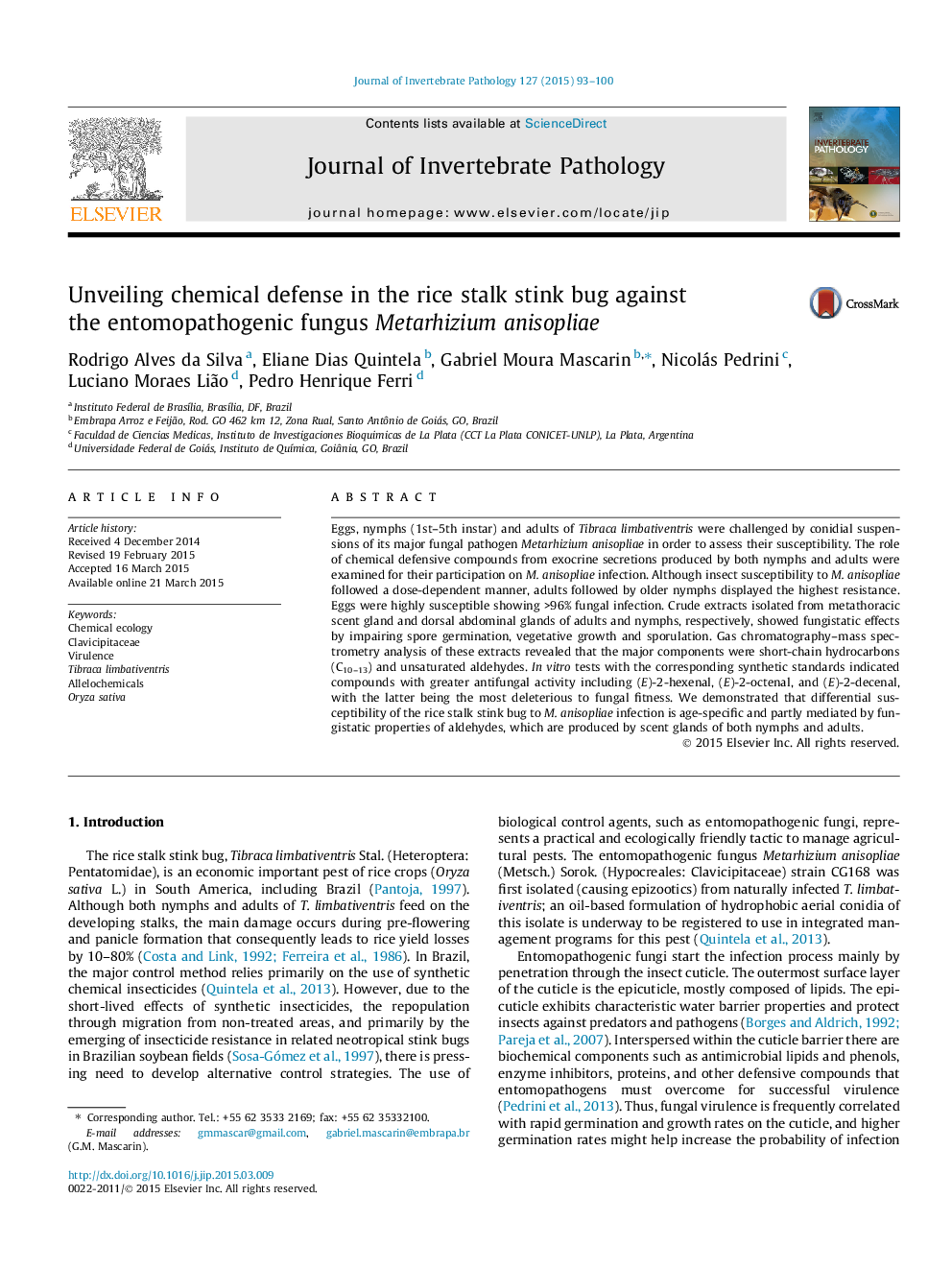| Article ID | Journal | Published Year | Pages | File Type |
|---|---|---|---|---|
| 4557645 | Journal of Invertebrate Pathology | 2015 | 8 Pages |
•Differential susceptibility of T. limbativentris to M. anisopliae is reported.•Eggs comprised the most susceptible stage to M. anisopliae.•Adults and older nymphs displayed the highest resistance to M. anisopliae.•Aldehydes from cuticular and gland extracts impaired fungal infection.•(E)-2-decenal exhibited the strongest antifungal activity on M. anisopliae.
Eggs, nymphs (1st–5th instar) and adults of Tibraca limbativentris were challenged by conidial suspensions of its major fungal pathogen Metarhizium anisopliae in order to assess their susceptibility. The role of chemical defensive compounds from exocrine secretions produced by both nymphs and adults were examined for their participation on M. anisopliae infection. Although insect susceptibility to M. anisopliae followed a dose-dependent manner, adults followed by older nymphs displayed the highest resistance. Eggs were highly susceptible showing >96% fungal infection. Crude extracts isolated from metathoracic scent gland and dorsal abdominal glands of adults and nymphs, respectively, showed fungistatic effects by impairing spore germination, vegetative growth and sporulation. Gas chromatography–mass spectrometry analysis of these extracts revealed that the major components were short-chain hydrocarbons (C10–13) and unsaturated aldehydes. In vitro tests with the corresponding synthetic standards indicated compounds with greater antifungal activity including (E)-2-hexenal, (E)-2-octenal, and (E)-2-decenal, with the latter being the most deleterious to fungal fitness. We demonstrated that differential susceptibility of the rice stalk stink bug to M. anisopliae infection is age-specific and partly mediated by fungistatic properties of aldehydes, which are produced by scent glands of both nymphs and adults.
Graphical abstractFigure optionsDownload full-size imageDownload as PowerPoint slide
